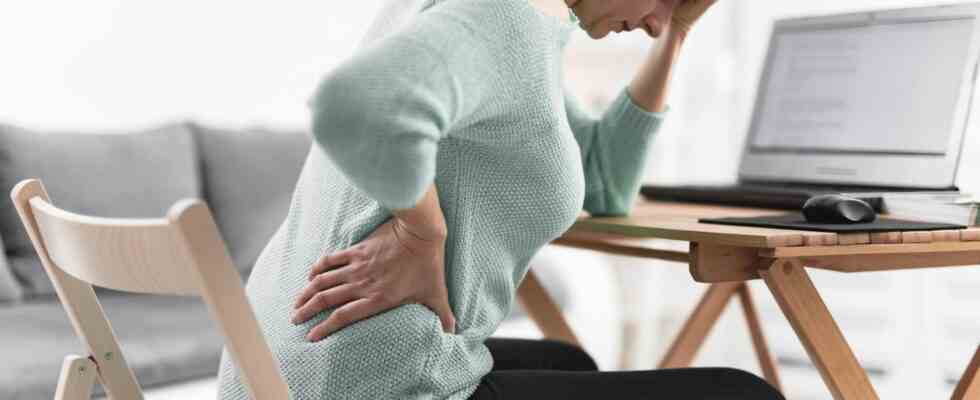Practical tips
When sitting becomes torture: How to counteract back and coccyx problems
If sitting becomes painful, a seat ring can provide relief
© m-gucci / Getty Images
Sitting is the new smoking, Dr. Kelly Starrett no doubt. The American physiotherapist says: The chair is our enemy and damages the body in the long term. He’s not entirely wrong considering how much time we spend sitting.
Anyone who has an office job spends an average of 80 percent of their working day sitting down – this is the result of a BKK health report (as of 2019): The lack of exercise is the greatest health burden that employees in the office are exposed to. So it’s hardly surprising that so many people suffer from musculoskeletal disorders. But back or coccyx problems are not uncommon and can be triggered by excessive sitting, a herniated disc, childbirth or an operation. This raises the question of how more movement can be integrated into everyday (office) life and which aids can counteract pain when sitting?
The fact is: lack of exercise damages the body
It’s no secret that lack of exercise is bad for your health, but many ignore the fact until their back problems start to appear. Then at the latest it is time to act to avoid long-term muscle and skeletal disorders. According to the Techniker Krankenkasse, which published a study on the topic “Move yourself, Germany” in 2016, almost every third adult in Germany suffers from back problems constantly or often. The frightening thing is that even 30 percent of those surveyed between the ages of 18 and 29 stated that they often or constantly had back pain. The same applies to those over 70.
“Today, back problems are caused less often by particular physical demands on the job and more and more frequently by the exact opposite – by a lack of exercise,” warns TK, pointing out that computer screens and automated work processes are responsible for the fact that our body suffers from the fact that we feel less move. “In addition, digital media and social networks ensure that we spend a good part of the end of the day without moving.” So the magic word is: movement. Build more physical activity into your daily routine, go for walks more often and – most importantly – get up several times a day, leave your desk and move for at least five minutes.
Why a seat ring can relieve discomfort
If you already suffer from back or tailbone problems that are most noticeable when sitting, an orthopedic pillow can help relieve the pain. A seat ring for example, has several properties that have a positive effect on the musculoskeletal system. For this reason, it is also suitable for those affected who feel pain when sitting due to a strenuous birth, an operation or a herniated disc. The seat ring can even be useful if you suffer from annoying haemorrhoids – and this has the following background: The recess in the middle of the cushion relieves the sacral and rectal area. The tailbone is exposed, so to speak, which in turn means that you adopt a better posture and straighten your spine. A cooling gel layer and the memory foam underneath, which is adjustable and resistant in some models, provide the necessary support and comfort.
Alternatively, you can also opt for the cheaper option: a Seat ring to inflate. It has the advantage that you can determine the degree of hardness yourself and thus adapt it to your personal pain tolerance. In addition, you have more leeway to load and balance your pelvis differently in order to bring more movement into sitting. Or you resort to an orthopedic one wedge pillow with a washable cover that counteracts poor posture and should be able to straighten the spine. This is made possible by the wedge-like shape, which automatically tilts your pelvis forward and you assume an upright position when sitting.
Sources: BKK health report, Technicians’ Health Insurance
You might also be interested in:
This article contains so-called affiliate links. There is more information here.

